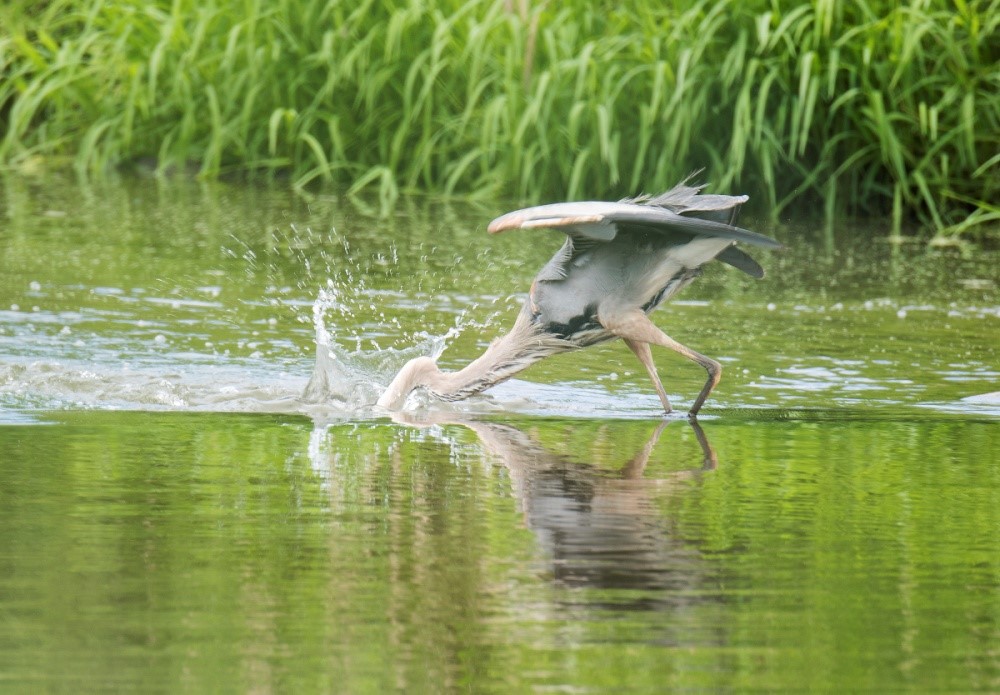SPOTLIGHT ON THE BHAS CONSERVATION COMMITTEE
For the past two decades, members of the BHAS Conservation Committee have maintained a focus on a tract of approximately 1500 acres of rare wildlife habitat consisting of glacial-outwash prairie near Maytown in south Thurston County. This prairie was formed because the land sloped away from the receding glacier so glacial till was carried away from the edge and sorted into gravel and sand as it was dropped, providing well-drained soils that initially supported prairie plants. More recently, Native Americans maintained these prairies through regular fires. Today these prairies provide habitat for many species of fauna and flora, including critical species such as the Mazama Pocket Gopher, Oregon Spotted Frog, Streaked Horned Lark, Vesper Sparrow, and Golden Paintbrush. At the same time, they are a resource for gravel and sand.
In 2005 BHAS and other conservation organizations obtained and signed a Settlement Agreement with the then-owner of the tract, which provided funds for monitoring of the water level and managing research concerning critical species. In particular, the seasonal water level is critical to the Oregon Spotted Frog (federally Threatened under the Endangered Species Act, and classified Endangered by Washington State). Water levels could be seriously impacted by gravel mining or industrial development on the adjacent portion of the tract now owned by the Port of Tacoma.
We have completed ten years of managing water-level monitoring by a professional hydrogeologist on the remainder of the tract owned by the WA Department of Fish and Wildlife (known as West Rocky Prairie), and are awaiting a final report on the results of the monitoring. It is clear, however, that protecting hydrologic functions in the area will be critical to the aquatic habitat of the Oregon Spotted Frog (OSF). Climate change modeling predicts long, dry summer-fall periods that can be particularly injurious to the OSF. Continued vigilance concerning mining and other land-moving activities will be necessary to preserve this endangered species. The Washington Department of Fish and Wildlife has devoted considerable funds and staff time to research (some of it funded through the Settlement Agreement) and efforts to improve and restore its habitat. This area serves as a laboratory for restoration interventions that could be used elsewhere.
The BHAS Conservation Committee has followed the development of the Thurston County Habitat Conservation Plan (which was adopted in February of 2022), pressing for the highest quality habitat for critical species in mitigation lands. The Plan is now in the implementation stage and we are recommending wildlife-sensitive professionals for the implementation task force.
Our Committee continues to work with county officials concerning land planning, Comprehensive Plan updates, the Shoreline Master Plan, Mineral Lands, and revisions to the Growth Management Act. Industrialization of wildlife habitats, largely for gravel mining and warehousing, are ongoing threats. We continue to oppose the rezoning of sensitive rural lands to industrial, particularly the proposed amendment to the Comprehensive Plan that would have specified any parcel adjacent to industrial lands as appropriate for rezoning to industrial –a proposal that would set the stage for creeping rezoning. Eventual rejection of this proposed amendment led to the Industrial Lands Study, now in progress.
On behalf of BHAS and four other conservation organizations, one of our Committee members submitted extensive recommendations to the Thurston County Planning Commission concerning the update to the Shoreline Master Program. These Comments pertain to buffers, native vegetation, aquaculture, mooring/docks/armoring, and critical areas. Many of these are now included in the Minority Report from the Planning Commission, which along with the Majority Report will be considered at the public hearing held by the Board of County Commissioners on May 16.
We have long supported the estuary option for Capitol Lake and are now part of the planning effort – along with Audubon WA, state agencies, and the Salmon Enhancement Group — to determine the best methods of restoration at the Kennedy Creek estuary for shorebirds, invertebrates, and salmon. This area, which is mostly in Mason County, has experienced a severe decline in the number of shorebirds in recent decades.
We worked for several years with the developer of the Skookumchuck Wind Energy Project (mostly in Lewis County) and now with the operator of the Project, concerning the take of critical species, particularly Marbled Murrelets. While we strongly support the development of wind and other forms of renewable energy because of their contributions to addressing climate change, we are concerned that it be done while minimizing the effects on critical species. We were able to obtain curtailment of selected turbines at the most critical hours during breeding season when Murrelets would be flying past the turbines to feed their young.
This article is a summary of just the most important long-term projects of the BHAS Conservation Committee over the last twenty years. We continue to contribute our efforts to many other local, regional, and state proposals and welcome additional local environmental issues within our capacity.
Photo credit: Great Blue Heron by Lynn A Tweedie, Audubon photo awards








